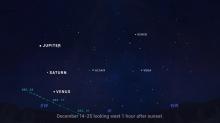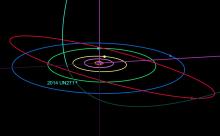Listen to today's episode of StarDate on the web the same day it airs in high-quality streaming audio without any extra ads or announcements. Choose a $8 one-month pass, or listen every day for a year for just $30.
You are here
Perseid Meteors
Comet Swift-Tuttle was last seen a quarter of a century ago, racing toward the outer solar system. We won’t see it again for a century. Yet it’s left us some little reminders of its presence: grains of ice and rock that create the Perseid meteor shower, which should be at its best the next couple of nights.
Swift-Tuttle has been called one of the most dangerous objects in the solar system. It orbits the Sun once every 133 years. Its orbit carries it slightly inside Earth’s orbit, so there’s a chance that it could hit our planet. And it’s a giant among comets — about 16 miles in diameter. If it hit Earth, it would be far deadlier than the asteroid that killed off the dinosaurs.
We have accurate predictions of its motions for the next few millennia. We know, for example, that its next close passage will take place on August 5th, 2126, at 10:50 a.m. Central Daylight Time — give or take a minute. It’ll miss Earth by about 14 million miles.
But a comet can be pushed around by other planets, or by “jets” of gas from its surface. That makes it hard to project an orbit very far into the future. So we don’t yet know when Swift-Tuttle might someday take dead aim at Planet Earth.
For now, it’s providing some smaller pyrotechnics — a meteor shower. The Perseids could produce a few dozen meteors per hour at their peak, before dawn tomorrow.
We’ll talk about another danger from space tomorrow.
Script by Damond Benningfield






